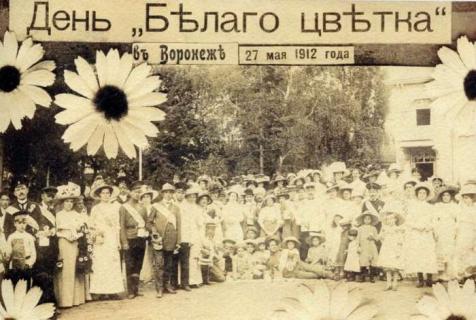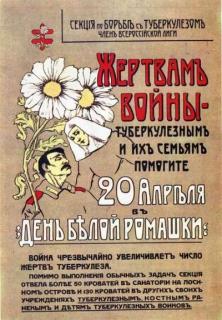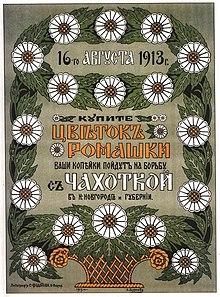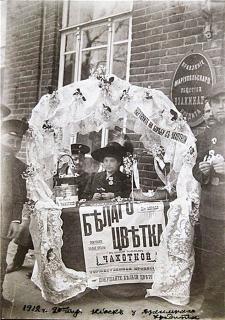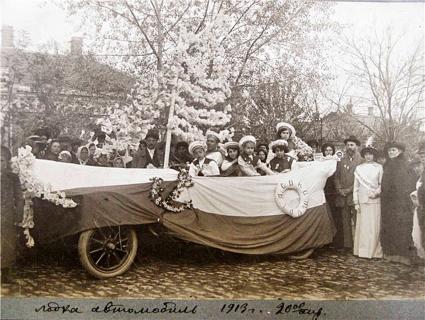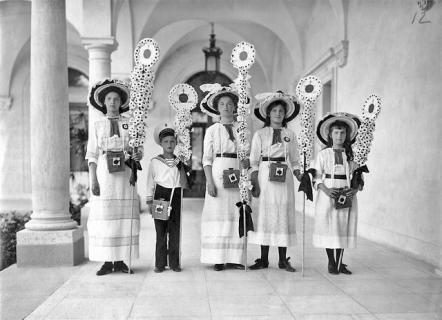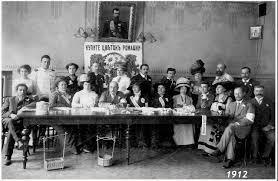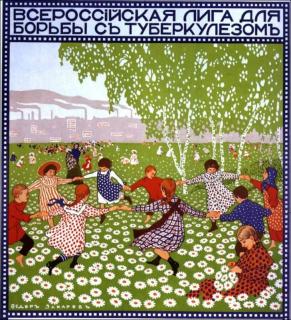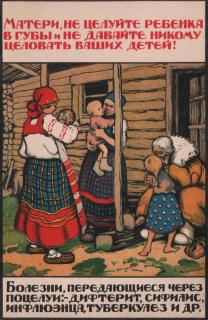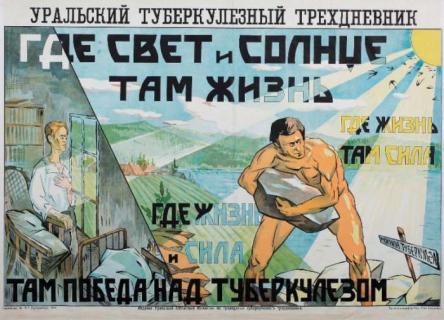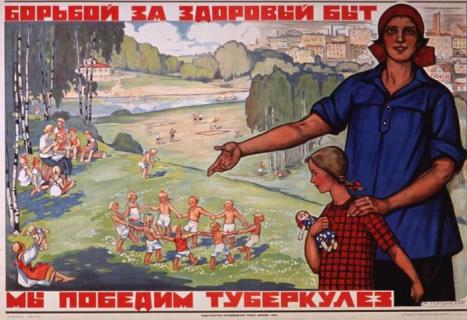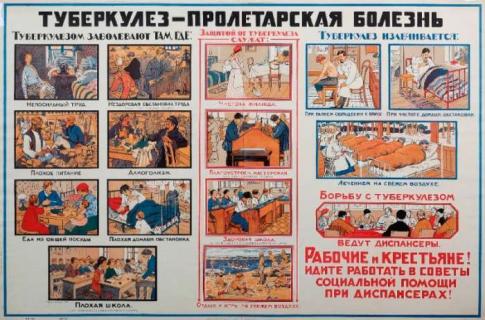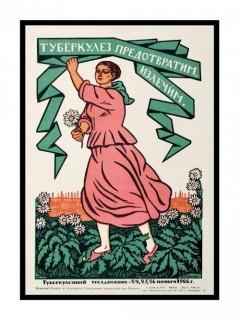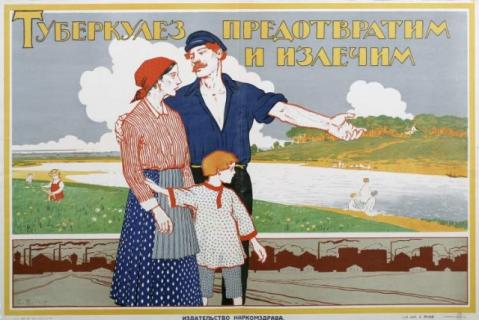In the first quarter of the 20th century tuberculosis was widespread and Russia had the highest mortality rate in Europe.
The Anti-Tuberculosis League, created in 1909, fought the disease by raising charitable contributions with TB labels and lapel tags, thru education, and by providing relief. The symbol of the fight against TB was the white chamomile flower. One early appeal said: "to make everyone remember the existence of a constant, terrible, albeit invisible enemy of all mankind - tuberculosis, and to urge everyone to contribute to the common cause of the fight against it". Pre-revolutionary posters advertised “White Chamomile Day,” during which anyone could buy a paper flower lapel tag, or TB label. White Flower Day was held in churches, temples, on the streets, and in theaters and clubs.
medical exhibitions were organized, doctors gave lectures on hygiene. In 1910, 104 cities in Russia took part in the White Flower Day campaign, and half a million rubles were collected - enough to build five new hospitals or sanatoriums for 40-50 people.
On April 11, 1918, the All-Russian Tuberculosis League was abolished, and its property was transferred to the People's Commissariat of Social Security of the RSFSR. Three day tuberculosis events were held with medical educators, and large sections of the population. Charitable contributions "kruzhechny" were collected, and those who gave received a TB label.
In 1924 the hammer and sickle, decorated with a scarlet poppy, replaced the white camomile flower as the new symbol of the fight against TB. The movement used the slogan, "Protecting the health of workers is the work of the workers themselves." From 1922 thru 1926 five annual three-day events took place in Moscow. Each of them had its own slogan: in 1922 - "Dispensaries-centers for the fight against tuberculosis", in 1923 - "Fight against childhood tuberculosis", in 1924 - "Fight against tuberculosis as a social disease", in 1925 - "For improving the work of tuberculosis dispensaries", in 1926 - "Improving the life of the working people."
Before WW2 fundraising seals were discontinued in the Russia.
Greens Catalog lists 117 pre WW2 Russian TB labels. Many were used as lapel tags and they often have pin holes. Metal and cloth TB items were also created. They are all rare. The basis of Green's listing was the collection of Frenchman, Albert Griffon (Griffon de Albert), whose collection was purchased in 1983 by John Denune. Download this 42 page collection, below. Dr Alexey Rozhkov (rojkovab@gmail.com) also has a fantastic collection of Russian TB labels, many not listed in Greens. He modestly says he knows of 3 collections better than his, and has informed us of a catalog by Andrey Nedalvodin (andreyn1969@mail.ru) Andrey is a collector, https://portcol.ru/main and has written many specialized catalogs available for purchase at https://portcol.ru/catalogs Also illustrated here are Russian TB posters. It is interesting to note that Palestine and Israel after her, used the white camomile flower on their TB seals as the symbol for the fight against TB.
Russian TB album created by Dan Cousineau.

